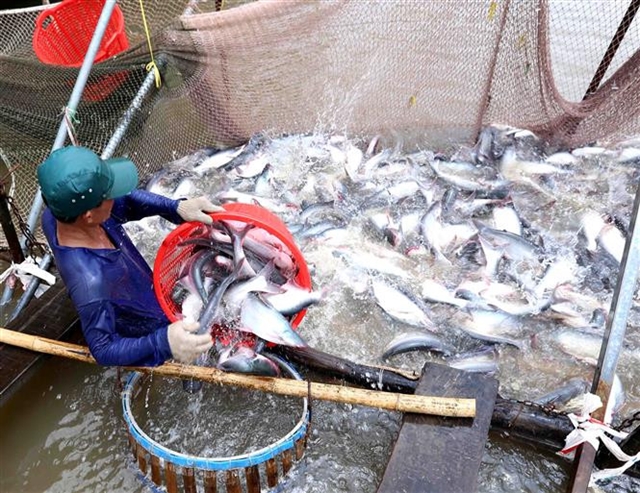According to the Việt Nam Association of Seafood Exporters and Producers (VASEP), seafood exports to China surged by 57 per cent year-on-year, reaching US$716 million. As of the first four months of 2025, China overtook the US to become Việt Nam’s largest seafood export market.

HÀ NỘI Việt Nam’s seafood export revenue reached US$4.07 billion in the first five months of 2025, marking a 14 per cent increase compared to last year.
China, the United States and Japan remained the country’s top three seafood export markets, accounting for 20 per cent, 16 per cent, and 15 per cent of total exports, respectively.
Shrimp and tra fish continued to be the country’s key exports.
The European Union emerged as a strong market, with imports of whiteleg shrimp, including frozen and value-added processed products, reaching 376,875 tonnes in 2024, up four per cent from 2023.
Việt Nam has seen a partial recovery in shipments to the EU. However, intense competition from Ecuador and India poses a significant challenge, prompting the country to focus on high-value products and market diversification to maintain its advantage and avoid disruptions.
According to the Việt Nam Association of Seafood Exporters and Producers (VASEP), seafood exports to China surged by 57 per cent year-on-year, reaching US$716 million. As of the first four months of 2025, China overtook the US to become Việt Nam’s largest seafood export market.
VASEP experts pointed out that climate change, water pollution and disease outbreaks are affecting the yield and quality of shrimp production. In addition, the global seafood market is becoming increasingly competitive, with strong players like Ecuador, India and Indonesia. As a result, Việt Nam’s seafood sector must improve output and quality to expand its presence in potential markets.
VASEP’s Communications Director, Lê Hằng, noted that exports to the US may see strong growth. She advised businesses to factor in rising transportation and logistics costs to reduce risks. In the meantime, exporters and US importers are urged to step up trade activities.
Diversification is key
Trình Trung Phi, Deputy Technical Director of commercial shrimp operations at Việt Úc Group, said that high production costs of Vietnamese seafood result from multilayered production processes. At the same time, international standards require not only lower prices but also socially responsible production. This presents a considerable challenge for the industry.
Economic experts have emphasised the need for the Government and businesses to invest in logistics infrastructure, technology, product diversification, and sustainable supply chains. These measures would help reduce costs and enhance profitability.
VASEP has proposed a series of initiatives for the tra fish segment, which must adapt to evolving global consumption trends. Previously overlooked niche markets are now being explored as potential targets.
“Enterprises should not limit themselves to producing frozen fillets. They need to diversify into value-added products such as fish balls, sausages, seasoned tra fish, canned braised fish, fish rolls and tra sushi to meet the growing demand for ready-to-eat and convenience foods, particularly in Asian urban centres like Japan, South Korea, Singapore and Malaysia,” VASEP said.
“Additionally, by-products, such as crispy fish skin, fish oil, collagen, gelatin and animal feed, are emerging as new trends.”

According to VASEP, consumers in the EU and North America are increasingly prioritising certified, eco-friendly and sustainable products. Tra fish raised under organic standards or certified by ASC, BAP, GlobalG.A.P, or RAS (Recirculating Aquaculture Systems) can command prices up to double those of conventional products.
VASEP also identified promising niche markets, including Islamic countries, Africa, and South America (excluding Brazil). Việt Nam has made initial inroads into the Brazilian market with tra fish exports, although the South American market remains largely untapped.
These regions offer favourable conditions for seafood consumption due to local tastes and demand for convenient food. Negotiations on a potential FTA between Việt Nam and the Mercosur bloc are expected to unlock export opportunities.
Deputy Minister of Agriculture and Rural Development Phùng Đức Tiến stressed that market diversification is not just an immediate necessity, but a long-term strategic goal. He urged enterprises to identify and develop high-potential products, enhance quality control, reduce production costs and strengthen processing capacity and trade promotion.
“Businesses must meet the diverse standards of export markets, including stringent ones like Halal. With proper preparation, we can overcome these trade barriers,” he added. VNS





